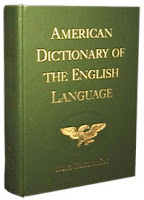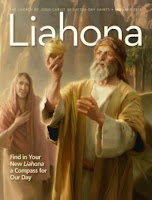An interesting inquiry has been
sent in, quoting a comment from a FARMS (Neal A. Maxwell Institute) 1991
article by James H. Fleugel, about the Liahona. I thought it important enough
to write an entire post about it.
Inquiry: “I read
in an article from the Neal A. Maxwell Institute that the Liahona was not a
magnetic compass, but rather it is clearly described as a revelatory device
dependent not upon magnetism but upon obedience to the Lord (1 Nephi 18:12).
The Book of Mormon makes this explicit, but because the translation also uses
"compass" and because some interpret this only to be a magnetic
compass, they think themselves into an anachronism. Doesn’t this throw your
interpretation out the window?”
Response: This article was written as a FARMS review (a
polite word FARMS often uses in its reviews, but which more often is little
more than a direct criticism) of a book written by Arthur J. Kocherhans
entitled “Lehi’s Isle of Promise.” I happen to know Art quite well and agree
with most of what he has written. But to limit this response to your direct
comment, let me suggest the following:
1) Noah Webster’s “1828 American Dictionary of the English
Language” is a seminal work for at least three reasons: a) Webster felt
inspired of the Lord to undertake and publish such work, and writes extensively
about this experience, b) He captured the language known in the New England
world during the time Joseph Smith was growing up and translating the Book of
Mormon, and c) He provides us with the English language as known in the early
1800s which provides us a greater insight into the meaning of words written at
that time, i.e., the translated Book of Mormon.
This does not mean that Joseph Smith knew about this
dictionary, of course, but he was familiar with the English language as it was
spoken at the time in his locality and
how it appeared in the King James Bible
of which he was a student—which gives us a better understanding of what words
in the Book of Mormon meant to Joseph Smith as he used them in the translation
of Mormon’s abridgement found upon the plates. It should be noted that Noah
Webster was very familiar with the English language as it was spoken in New
England during this time, and was quite familiar with the Bible, which quotes
he often used in his definitions to give the reader a better understanding of
the explanation.
2) The Liahona, as
it is described, had these qualities: a) It had two spindles, which word is
described by Noah Webster and known in Joseph Smith’s day as “a slender pointed
rod or pin…that turns,” and also described as a “pivot,” which, in turn, is
described as “a pin on which anything turns,” which sounds very much like the
needle in any compass. One of these spindles “pointed the way
whither we should go into the wilderness” (1 Nephi 16:10), which also sounds
like a compass. In fact, three verses later (second paragraph afterward in the
original publication), Nephi describes that direction as “nearly a south-southeast
direction” (1 Nephi 16:13),
and overall sounds strangely like a compass
heading; and, by the way, these spindles are also called pointers (1 Nephi 16:27);
b) The Liahona had other properties than the
two spindles, since it held writing on the ball itself, as Lehi was instructed,
“Look upon the ball, and behold the things which are written (1 Nephi 16:26). Nephi says “my
father beheld the things which were written upon the ball” (1 Nephi 16:27).
3) The Liahona worked by faith, that is, “they
did work according to the faith and diligence and heed which we did give unto
them” (1 Nephi 16:28), and also ceased to work in the presence of evil, or
disobedience (1 Nephi 18:12), and obviously worked in the hands of the obedient
(1 Nephi 18:21).
4) The Liahona is actually called a compass by
Joseph Smith, and the word compass in his day meant “an instrument for
directing or ascertaining the course…a circular box, containing a paper card
marked with the thirty two points of direction, fixed on a magnetic needle,
that always points to the north.” Thus Joseph Smith, in using the word
“compass,” which is taken from Nephi’s direct quote (2 Nephi 5:12), must have
understood through the Spirit that the Liahona was, indeed, a compass. In fact,
Alma makes that quite clear when he said to his son, “I have somewhat to say
concerning the thing which our fathers call a ball, or director -- or our
fathers called it Liahona, which is, being interpreted, a compass; and the Lord
prepared it” (Alma 37:38). “Which is, being interpreted, a compass”! Now why is
that description used by Alma? Obvious, because it was a compass—that is it
pointed the way to the 32-points of direction! Whether it was magnetic or not
is never mentioned, but just because “magnetic” is not used, does not mean it
didn’t work under the principle of magnetism like any compass today; however,
having said that, it doesn’t preclude the Lord from interfering with this
magnetic attraction when the Liahona didn’t work.
5) According to
Fleugel, there is no implication in the text of the Book of Mormon itself that
the Liahona was a magnetic compass. Actually, it can also be said that there is
no implication in the text of the Book of Mormon itself that the Liahona was
not a magnetic compass. In fact, there seems to be more indication (spindle,
pointer, pointed the way, etc.) that it was a compass, or worked under a very
similar system as the compass we use today.
7) Fleugel states of
the Liahona: “Rather, it is clearly
described as a revelatory device dependent not upon magnetism but upon
obedience to the Lord.” However, the fact of the matter is, the scriptural
record does not say that at all. It does not say the Liahona was not dependent
upon magnetism when it “pointed the way.” Fleugel here injects his own opinion,
not supported by the scriptural record, that the Liahona did not operate upon
magnetism. That does not mean it was not also reliant upon faith and obedience
to the Lord. Or, stated differently, when the holder of the ball was obedient
and faithful, it operated, when he was not, it did not operate. We are not told
that when it operated, under what physical condition it operated. That
condition could well be magnetism. On the other hand, when disobedient, the
Lord shut down the operation. It appears that Fleugel is trying to make his own case here for a non-magnetic compass—could
that be because Fleugel, like almost everyone at FARMS (now Maxwell Institute)
is sold on Mesoamerica, which is some 90º off the compass reading of
north/south, and a true compass in the hands of the Nephites would clearly
eliminate Mesoamerica from any possibility of being the Land of Promise? Hmmm.
6) Anochrism – because
Joseph Smith used a word does not mean Nephi used that particular word. Translation, after all, is not a word for
word matter, but a meaning for meaning transfer. This is both an absurd and
misleading comment made by Fleugel. The word in reformed Egyptian that Mormon
used is unknown, however, its meaning was translated into 1829 English language
as “compass.”
Thus, the Liahona is
called a Ball (because of its shape), a compass (because it pointed the way)
and a Director (because it gave written information). Honestly, is there any
difference between saying “we did follow the directions of the ball, which led
us in the more fertile parts of the wilderness” (1 Nephi 16:16), than in
saying, “we did follow the directions of the compass needle, which led us in
the more fertile parts of the wilderness”? Or is there any difference in saying,
“And within the ball were two spindles; and the one pointed the way whither we
should go into the wilderness” (1 Nephi 16:10), than in saying, “And within the
compass was a needle, which pointed the way whither we should go into the
wilderness.”
It is hard to get
around the fact that this was a compass—a special compass to be sure—but a
compass is, basically, a method of determining direction. How it works is less
important than that it did work. And according to Nephi’s own words after
obtaining the compass, he knew in which compass direction they were heading
and used those terms in his writing, such as south-southeast and nearly eastward. Both
directions can be tracked by the physical appearance of the ground he traveled.
So, it would appear, Nephi knew the cardinal directions as a result of having
this compass. Which would mean, and a point FARMS simply cannot accept, that
Nephi knew which direction was north, south, east and west after landing in the
Land of Promise. And Mormon, also having the Liahona, would also have known,
and used in his abridgement of the Nephite record. All of this, of course,
shows that Mesoamerica could not possibly be the Land of Promise since it is
oriented mostly east and west rather than north and south, which, it seems obvious, is the reason Fleugel in his review makes a point of this to discredit the Nephites from knowing directions as we know them today.









Here was the thought that came to my mind. Did not the Liahona point the way which they should go? A compass does not point in the direction one should go, but points in the direction that one is going.
ReplyDeleteWhen looking for food, did it not point the way Nephi should go and told him where to go for the food?
And within the ball were two spindles; and the one pointed the way whither we should go into the wilderness.
ReplyDeleteAnd we did follow the directions of the ball, which led us in the more fertile parts of the wilderness.
And it came to pass that I, Nephi, did go forth up into the top of the mountain, according to the directions which were given upon the ball.
And it came to pass that after they had bound me insomuch that I could not move, the compass, which had been prepared of the Lord, did cease to work.
13 Wherefore, they knew not whither they should steer the ship,
It is the compass that actually shows them where to go... not the direction in which they are going. No?
Actually, a compass will show both. The needle points to constant north; however, the wheel, marker, or secondary needle (depending on the type of compass you have) can be pointed in the direction of your travel. Expensive hand compasses have both directional capabilities, which is essential if traveling out where there is nothing else to guide you. A good military personal compass has even more capability. By the way, email me (I lost your addy) and I can send you more info on this)
ReplyDelete